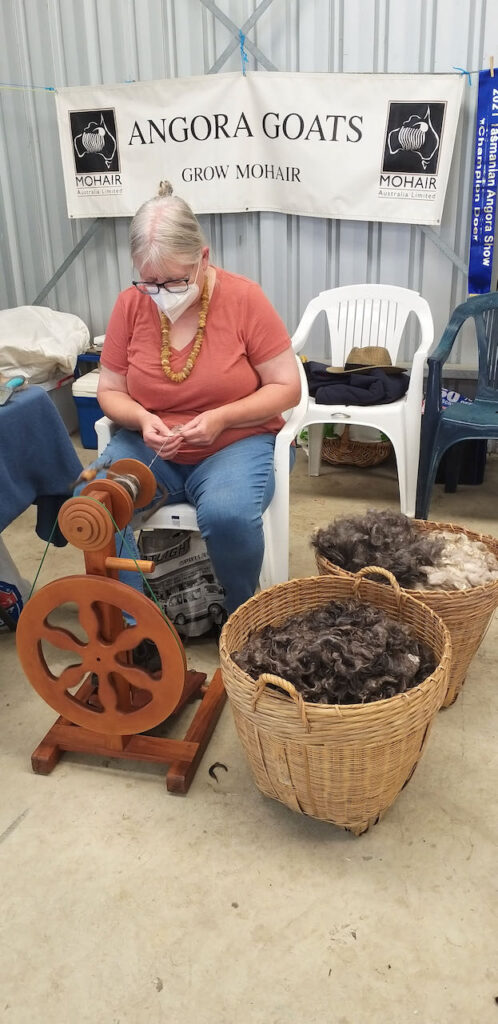Held at Longford Showgrounds on Sunday, January 30
It was a great day for Goatfest, held for the second consecutive year at the Longford showgrounds. Last year was a success and this year was no different. The weather was kind and the crowds turned up with about 500 visitors who came to see what our wonderful goats can offer. There were about 40 goats of varying breeds on display, along with by-product industries like soaps and garments. The event ran from 10am through to 3:30pm and it is a great opportunity for the general public to learn all about what the unfairly maligned goat has to offer.
Scattered around the showground, there were plenty of stalls set up by breeders from all around Tasmania, showcasing their breed and what they had to offer. The stallholders spoke with members of the community throughout the day, while selling a range of products. A number of visitors showed an interest in purchasing goats for their property after seeing the benefits they offered.
Selling Mohair
President of Mohair Australia’s Tasmanian sub-branch Eian Rayner was at the event with a number of his Angora goats, and revealed the particular breed’s fibre, known as mohair, was a highly sought after material mainly due to its being light weight, warm, durable and resilient.
“At present, the fibre is bringing in very good money at our auctions with overseas buyers, I sent twenty odd kilos off and cleared just over $1000,” he said.
“We pack it all up in bags, and take it to the Australian Wool Network in Launceston, they then press all of those bags into a big bale, before sending it off to a sorting and selling centre in NSW, who then class it all up and arrange the sales. The last sales were to various places, including Japan and China.”
Mr Rayner said the product was often turned into clothing, which some Italian organisations opt to mix with merino wool when making suit jackets.

Locally made Mohair garments
At a much smaller and local scale, the wool is also used to create clothing. Owner of Darke Doings, Robin Darke, said she had been making clothing out of goat fibre for about 25 years, after moving to Tasmania from Wisconsin in the US in the ’80s. “I’ve knitted fibres for about 40 years, but after we moved here and bought coloured goats for our property, I began to dye and knit mohair to make garments,” she said.
Mrs Darke said she used basic mohair yarns for the base of her garments, before adding colourful and elaborate hand spun designs throughout them.
“Mohair is wonderful, it doesn’t wrinkle, so you can throw it down and pick it up later and it will still look good,” she said. “I’ve been told socks made out of this particular material are so warm that people in Antarctica wear them, so if you wan to be warm, mohair is the way to go.”
Other Breeds
Miniature Goat Breeders Association of Australia president Stephen Fagg said the “minis” are always a very popular attraction and a big draw card for events because of their “high cuteness factor”.
“You’ve only got to look at them and you can see why they’re so adored by everyone, especially by the kids,” he said.
Joining the miniatures at the event, were multiple Anglo Nubian goats, belonging to an organisation called Little High Country.
Owner of the business Scott Payton said Anglo Nubian’s were an all-purpose goat, useful for meat, milk and hide production.
Nah-Doo Goats co-owner Tracey Doohan brought some of her Boer and Dairy goats to the event, along with soap created from the milk of the latter.
“We started making the soap because one of our four children had skin issues, caused by supermarket soap, so we decided to make our own natural equivalent,”she said.
(Text, extracted from The Examiner 31/1/2022)










